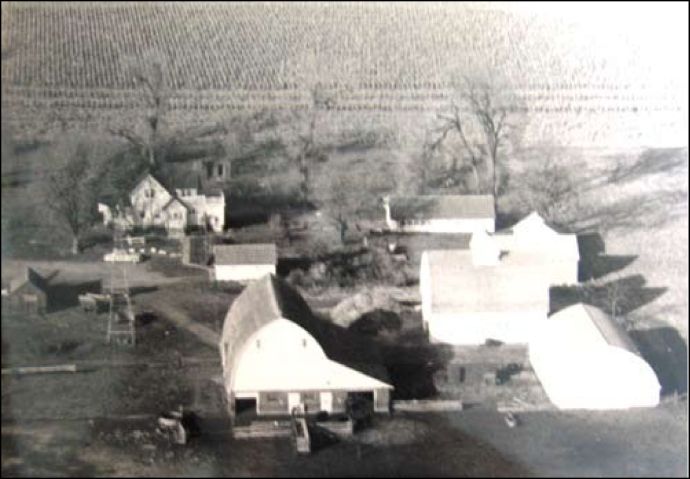
Perhaps the most different item to be seen in the photo looking to the north is the “wire-checked” corn field behind the house in which the object was to be able to cultivate the crop in two different directions. In this case the planter ran to the left and right in the photo, but just to the left of the house, the viewer can align the corn into rows that appear to run north and south, and also to the right of the house one can align rows to the northeast. 1952 was probably one of the last times this practice was used in the Milford Twp area as it quickly went out of “vogue” as soon as the quality of herbicides improved. However, it still makes a pretty picture as the lines of corn spread out before the viewer. Rex was one of earliest farmers to have a 4 row planter, and some thought that was too much `planter' to keep an eye on as there was no such thing as a row monitor.
Also, just barely visible behind the little shed at the left of the photo, is a mounted 2 row corn picker. This is another practice that was abandoned a few years later as combines got a real grasp on the harvesting situation by the middle of the 1960's. The amount of labor was reduced at harvest time and also, there was no shelling time the following year and thus, this practice was no longer needed and also abandoned. Farm labor was becoming more and more difficult to obtain as farm families became smaller, and as mechanization gained more and more of a grasp, the need for a “year `round man” slowly disappeared. This, in turn, caused those who might be available for farm labor to “go to town” for a more steady job and then not have time, or the desire, to work on the farms.
The various livestock operations of the individual farmer are quite visible in this view. Note the chicken house to the east of the house for the poultry, the hog house between the barn and the machine shed, and just to the south of the barn stands a lone cow as a representative of the dairy operation of about 14 cows, there are probably a few “fat cattle” in the loafing shed on the east side of the barn. Also, at this farm, at the time, but not shown in the photo, were two draft horses and a couple ponies.
Just to the left of the corn crib is a pile of corn cobs from the shelling of the previous year's corn crop. Corn shelling became quite rare by the mid to late sixties. Also, to the northwest of the barn, is a 35 horsepower tractor with no cab. This was the “big” farm field tractor. Cabless tractors had everything but disappeared by the eighties for field work. A “big” wagon, visible to the right of the little shed, (cont'd)